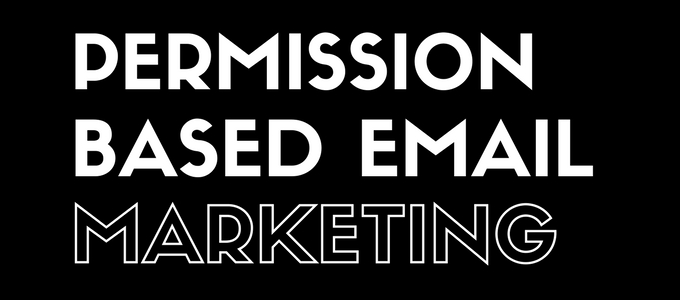When Google wrote to me recently, they chose to use traditional mail. Paper, an envelope and a postage stamp. It got my attention. I opened it, read it and acted on it. More importantly, here’s why Google contacted me via traditional mail and what you and your business can learn from it.
The problem with email
It’s free. There’s no barrier to entry. As a result, anyone can interrupt us with unwanted email. Also, because it’s free, too little thought is given to the quality of the email or how well it’s targeted. Hence the huge spam problem. It costs nothing to put a low value email together, click send and pester 1000 or 1000000 people with it.
Spammers have trained us to ignore email that looks like it could be spam. This includes promotional emails. The exact kind of emails that legitimate business owners use for marketing.
With spam filters and junk mail filtering, your prospective clients see maybe 1 marketing / promotional email in every 10. They may open 1 in 10 of those they see.
Based on these very rough numbers, this gives you a 1 in 100 chance your email will even be opened by a prospective client. If the email’s subject line is not expertly written, open rates will be even lower. (Tip: Here’s how to write better headlines.)
But don’t worry. In a few moments I’ll show you how to make your email marketing extremely effective.
The value of traditional mail
It isn’t free. However, the price creates a massive barrier to entry. This is why we receive a fraction as many marketing letters via traditional mail as we used to.
When we receive a correctly addressed letter in a regular envelope, we have to open it in order to see if it’s something important, something interesting or junk. The key thing here is that we open it. Open rates for marketing letters, addressed correctly, sent in regular (plain) envelopes are around 98%.
(These numbers only drop, when the letter is sent in a promotional envelope. Otherwise, the envelope must be opened by the recipient, so they can tell if it’s of interest or not.)
As you’ll see in a moment, I’m not suggesting you send all your marketing mail via traditional mail. However, it’s well worth considering for some mailings. Especially when your message is important enough, your list is high quality and you want to ensure almost everyone on the list will read it.
The important thing here, is to make sure you are using the correct tool for the job. Here are some options, based on email / traditional mail.
Permission email marketing
Email becomes super-effective, when you have permission from the recipient and you know your emails are getting into their inbox.
For instance, the email version of Jim’s Marketing Blog requires people to double opt-in. In other words, after entering their name and email address on my blog, they receive an email asking them to confirm their subscription. Only then can they subscribe. This gives me permission to send them my latest blog post. It also proves they can receive my emails. The exact same approach works equally well for newsletters.

The cost is low, especially if you have fewer than 1000 people on your permission list. I recommend using a professional emailing service even if you only send a small number of emails. They make it easy for you to track open rates, clicks, etc. That means you can see how your content or marketing message is resonating with your readers.
Plus, professional email providers give you all the tools you need in order to manage your reader lists. They also stop your email server’s ip address from being blacklisted. I’ve known this happen to lots of business owners. It can stop you from being able to send regular business emails to clients, suppliers and contacts until you get it resolved.
Many email providers, such as Mailchimp, offer a free service to people with a small list. The prices only become significant when your list is in the tens of thousands.
With massively lower costs than traditional mail, permission marketing via a professional email provider is exceptionally effective.
Email marketing to strangers on lists
This is less of an option and more of a warning! Buying so-called permission lists and then emailing them, is usually a waste of money. These are lists, which are sold on the understanding that the people on the lists gave permission for their details to be sold.
In 99.9% of cases, these people simply forgot to uncheck the box that says “send me emails with offers from partners”, when they downloaded a freebie from the internet or subscribed to a free service.
The key thing is that the people on those lists did not opt-in to receiving emails from you!
Conversion rates from such lists are terrible. That’s because those on the lists are getting bombarded with spam, from the thousands of people, who buy the lists they’re on. So they either use extremely powerful spam filtering, have white-list-only email or have switched to a new email address.
Traditional marketing letters (direct mail)
This can be an extremely effective way to get your marketing message in front of your prospective clients. The exceptionally high open rates (so long as you take the measures I mentioned earlier) make it a very attractive proposition.
It also allows you to purchase a high quality list, from a reputable list vendor, with the correct contact details and get great results. Remember, the prospective client has to open the envelope to determine the value. This is faster than earning permission, so can be useful if you need quick results.
Of course, even if 100% of people open your mailshot, it won’t matter unless your message is professionally written. Most direct mail from small businesses is written by the business owner and is simply ignored.
Tip: If you’re prepared to pay for a mailing, pay an expert to write it… someone who knows how to motivate the reader to take action.
So, there are a few thoughts on the merits of traditional mail shots and permission-based email marketing. In short, each has its place and each can be spectacularly effective, if handled correctly.
P.S. I recommend you read this. Does email marketing work? How I helped Irene make over $32,000 in 9 days.
